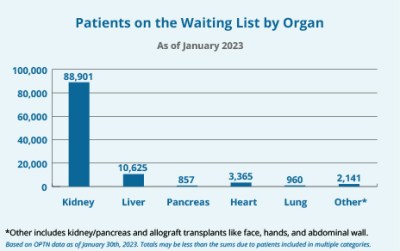The field of therapeutic cloning has long sought to provide a way to create replacement organs and tissues from a patient’s own cells, with the most recent boost coming from the US Advanced Research Projects Agency for Health (ARPA-H) and a large federal contract awarded to Stanford University.

The creatively named Health Enabling Advancements through Regenerative Tissue Printing (HEART) project entails a 26.3 million USD grant that will be used to create a functioning bioprinter backed by a bank of bioreactors. Each bioreactor will cultivate a specific type of cell, which will then be ‘printed’ in its proper place to gradually build up the target organ or tissue. The project’s five year goal is the printing of a fully functioning human heart and implanting it into a pig.
Assuming this is successful, the general procedure can then be refined to allow for testing with human patients, as well as the bioprinting of not just hearts, but also lungs, kidneys and much more. The lead investigator at Stanford University, [Mark Skylar-Scott], cautions that use with human patients is likely to be still decades off. But the lifesaving potential of this technology, once matured, is staggering. This is highlighted by data from the US HRSA, with over 42,000 transplants in 2022 in the US alone, with over a hundred-thousand patients waiting and 17 people who die each day before an organ becomes available.
















Staggering, but already competing with the use of animal organs in people.
https://nyulangone.org/news/pig-kidney-xenotransplantation-performing-optimally-after-32-days-human-body
“create replacement organs and tissues from a patient’s own cells”
– Much better than a lifetime of immunosuppressants. Animal organs with the gene for alpha-gal removed promise to be a game changer, an unlimited on-demand transplant source that will be available much earlier than the 3d printed organs mentioned here. So they are definitely worth the effort. Organs printed from the patient’s own cells however, when and if they arrive will be much better yet.
We still have problems with transplants when donors are of a different race than the patient. Tossing a pig heart into a man is still too early days and will likely never work quite right. These are human organs, not a carburetor.
Tossing a carburetor into a human, will likely never work right either.
B^)
But they already did it.
Ok, I know, it wasn’t for very long and the human involved, being brain dead couldn’t stress it with any physical activity. But now we know that at the very least it can sometimes keep a person alive for some amount of time. Worst case that could give one more time for a human heart to become available.
Or maybe it will just work well enough to keep. Don’t knock it before it’s been tested.
Remember, they can keep tweaking the genes of those pigs if they find more problems. That is rather frowned upon with human donors, plus they take a lot longer to mature.
Well… absolute worst case… it only works for the most pig-like humans and we end up with longer lived maga.
I eat meat.
Sometimes I even kill it myself.
Genetically modified animals being farmed for organ transplants… Doesn’t bother me.
Animals used for testing in the many iterations of failures that will likely occur before there is a successful functioning heart… Well, that’s what it takes. I certainly would want this to be available if/when I need it.
Knowing that that one pig who gets the first of these hearts to actually work will probably only live for days then be killed in order to study the heart… Oh come on! Give that one a long and happy life at least!
” and much more” are you thinking what I’m thinking? It’s been a while since I got an “extension” spam email….
There’s already work being done on tooth materials from stem cells. This seems like a lower risk application of 3D printing of body parts than critical organs.
they should do kidneys first right? top in the paretto?